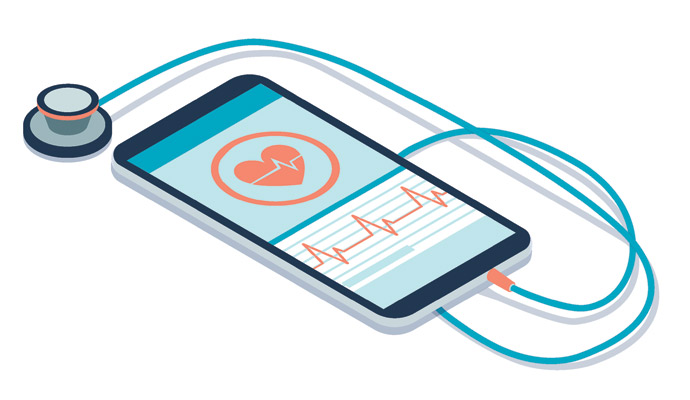Finger Monitor Uses Smartphone Features to Detect Blood Pressure
A new tool from UC San Diego engineers combines smartphone features such as a camera and flash to monitor blood pressure.

Source: Getty Images
- Developed by engineers at the University of San Diego (UC San Diego), a finger-worn clip uses various smartphone features to determine patient blood pressure while maintaining cost-effectiveness.
According to the Centers for Disease Control and Prevention (CDC), 47 percent of US adults had hypertension, or high blood pressure, in 2021.
UC San Diego engineers created a clip that leverages a smartphone camera and flash to measure blood pressure without being calibrated to a cuff, like other blood pressure monitors. Costing about 80 cents to make and 10 cents when manufactured at scale, researchers stated that this device could support hypertension monitoring and treatment in low-resource communities, according to the press release.
“Because of their low cost, these clips could be handed out to anyone who needs them but cannot go to a clinic regularly,” said study senior author Edward Wang, PhD, a professor of electrical and computer engineering at UC San Diego and director of the Digital Health Lab, in a press release. “A blood pressure monitoring clip could be given to you at your checkup, much like how you get a pack of floss and toothbrush at your dental visit.”
The clip comprises a 3D-printed plastic attachment that goes over the smartphone camera. To use the clip, the patient first presses on it with their fingertip. From there, a smartphone app assists the user in determining how long and hard they must press it. Upon pressing it, the flash of the smartphone lights up the fingertip. The light is projected through a small channel to the camera as a red circle image.
The app uses two pieces of information from the circle to draw conclusions. The size of the circle is indicative of pressure, as the circle enlarges as the pressure force increases. Meanwhile, the brightness of the circle shows the volume of blood that enters and exits the fingertip.
After testing the clip on 24 patients from the UC San Diego Medical Center, researchers determined that its capabilities were similar to those of a blood pressure cuff.
“Using a standard blood pressure cuff can be awkward to put on correctly, and this solution has the potential to make it easier for older adults to self-monitor blood pressure,” said study co-author and medical collaborator Alison Moore, MD, chief of the Division of Geriatrics in the Department of Medicine at UC San Diego School of Medicine.
Looking ahead, researchers aim to increase the user-friendliness of the tool, test the clip on various skin tones, and standardize its design.
Prior research has also indicated the efficacy of new digitally enabled methods of blood pressure management.
A study published in the Journal of the American Heart Association in March described a remote hypertension program that was successful in assisting patients during the pandemic.
Created by Mass General Brigham, this program provided patients with a home blood pressure monitor that captured various measurements. After collecting these measurements, an evidence-based clinical algorithm reviewed them to improve pharmacological decision-making. From there, physicians and pharmacists worked together to create a treatment plan for each patient.
